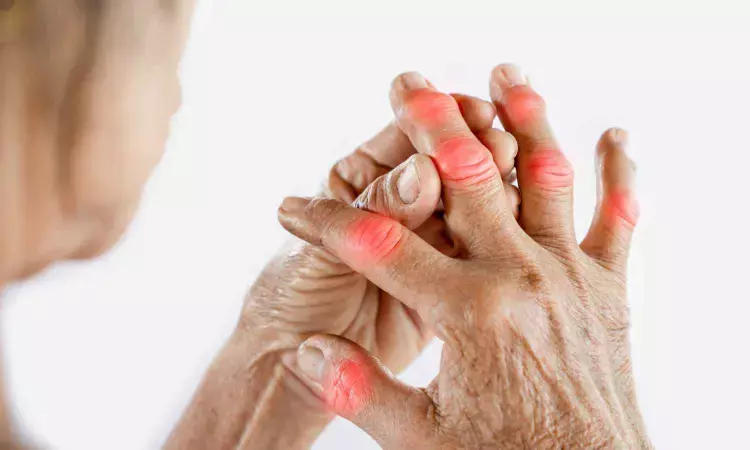- Home
- Medical news & Guidelines
- Anesthesiology
- Cardiology and CTVS
- Critical Care
- Dentistry
- Dermatology
- Diabetes and Endocrinology
- ENT
- Gastroenterology
- Medicine
- Nephrology
- Neurology
- Obstretics-Gynaecology
- Oncology
- Ophthalmology
- Orthopaedics
- Pediatrics-Neonatology
- Psychiatry
- Pulmonology
- Radiology
- Surgery
- Urology
- Laboratory Medicine
- Diet
- Nursing
- Paramedical
- Physiotherapy
- Health news
- Fact Check
- Bone Health Fact Check
- Brain Health Fact Check
- Cancer Related Fact Check
- Child Care Fact Check
- Dental and oral health fact check
- Diabetes and metabolic health fact check
- Diet and Nutrition Fact Check
- Eye and ENT Care Fact Check
- Fitness fact check
- Gut health fact check
- Heart health fact check
- Kidney health fact check
- Medical education fact check
- Men's health fact check
- Respiratory fact check
- Skin and hair care fact check
- Vaccine and Immunization fact check
- Women's health fact check
- AYUSH
- State News
- Andaman and Nicobar Islands
- Andhra Pradesh
- Arunachal Pradesh
- Assam
- Bihar
- Chandigarh
- Chattisgarh
- Dadra and Nagar Haveli
- Daman and Diu
- Delhi
- Goa
- Gujarat
- Haryana
- Himachal Pradesh
- Jammu & Kashmir
- Jharkhand
- Karnataka
- Kerala
- Ladakh
- Lakshadweep
- Madhya Pradesh
- Maharashtra
- Manipur
- Meghalaya
- Mizoram
- Nagaland
- Odisha
- Puducherry
- Punjab
- Rajasthan
- Sikkim
- Tamil Nadu
- Telangana
- Tripura
- Uttar Pradesh
- Uttrakhand
- West Bengal
- Medical Education
- Industry
Higher Physical Activity whether spread over week or at weekend tied to Reduction in Gout Risk: Study

A new study published in the journal of medRxiv revealed that individuals with higher levels of physical activity, as measured by wearable devices, experienced modest but statistically significant reductions in new-onset gout. The benefit was observed regardless of whether exercise was spread throughout the week or concentrated on weekends. As the findings are currently from a preprint, they remain preliminary pending peer-reviewed publication.
The study analyzed a total of 97,474 gout-free adults who wore wrist-based accelerometers for 7 days to track physical activity. The participants were grouped into 3 categories: Inactive (fewer than 150 minutes per week of moderate-to-vigorous physical activity [MVPA]); Weekend Warrior (WW) (at least 150 minutes of MVPA, with more than half compressed into one or two days); and Regularly Active (RA) (at least 150 minutes of MVPA spread more evenly across the week).
Over a median follow-up of 8 years, 905 participants developed gout. When compared to inactive individuals (36,785 people), the individuals in the RA group (20,298 people) showed a 25% lower risk of gout, while those in the WW group (40,391 people) had a 16% lower risk. Specifically, hazard ratios (HRs) were 0.75 for RA and 0.84 for WW, indicating a statistically significant protective effect for both.
However, when this research adjusted for total MVPA volume, the difference between RA and WW groups disappeared. This suggests that the amount of exercise matters more than whether it is spread throughout the week or concentrated on weekends. Further analyses using different definitions of weekend warrior activity, excluding early gout cases, and adjusting for genetic predisposition all confirmed the robustness of the findings.
When this research considered the genetic risk of participants for gout using polygenic risk scores, the benefits of physical activity remained consistent across all genetic profiles. In other words, both regular exercisers and weekend warriors enjoyed protective effects regardless of whether they had a high or low inherited risk for the disease.
The study emphasized that even those with busy lifestyles who can only fit exercise into weekends may still gain substantial health benefits. Gout, a form of inflammatory arthritis characterized by sudden and painful joint swelling, has been rising globally due to lifestyle changes and increasing obesity rates. Preventive strategies are therefore a public health priority.
Overall, both consistent weekly exercise and concentrated weekend workouts can meaningfully reduce gout risk, provided that individuals meet the recommended threshold of at least 150 minutes of moderate-to-vigorous activity per week.
Source:
Wang, Q., Liu, Y., & Zhu, B. (2025). Accelerometer-derived physical activity volume, not pattern, correlates with reduced gout incidence in a UK prospective cohort. In medRxiv. https://doi.org/10.1101/2025.08.24.25334337
Neuroscience Masters graduate
Jacinthlyn Sylvia, a Neuroscience Master's graduate from Chennai has worked extensively in deciphering the neurobiology of cognition and motor control in aging. She also has spread-out exposure to Neurosurgery from her Bachelor’s. She is currently involved in active Neuro-Oncology research. She is an upcoming neuroscientist with a fiery passion for writing. Her news cover at Medical Dialogues feature recent discoveries and updates from the healthcare and biomedical research fields. She can be reached at editorial@medicaldialogues.in
Dr Kamal Kant Kohli-MBBS, DTCD- a chest specialist with more than 30 years of practice and a flair for writing clinical articles, Dr Kamal Kant Kohli joined Medical Dialogues as a Chief Editor of Medical News. Besides writing articles, as an editor, he proofreads and verifies all the medical content published on Medical Dialogues including those coming from journals, studies,medical conferences,guidelines etc. Email: drkohli@medicaldialogues.in. Contact no. 011-43720751


